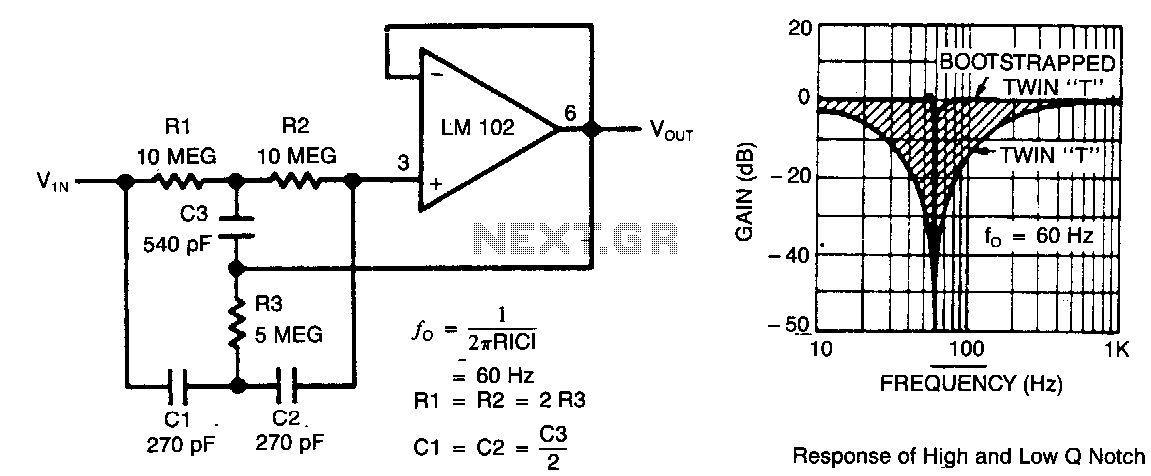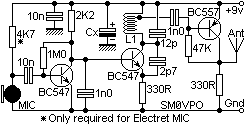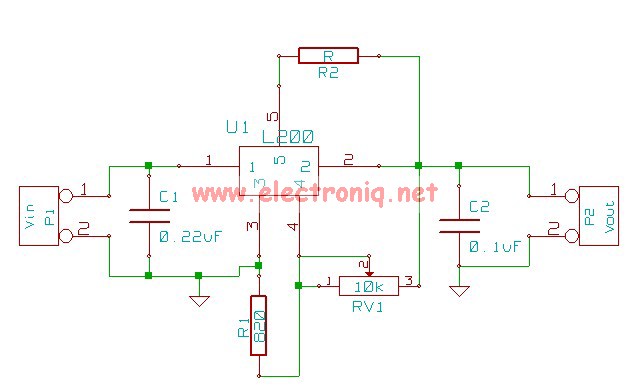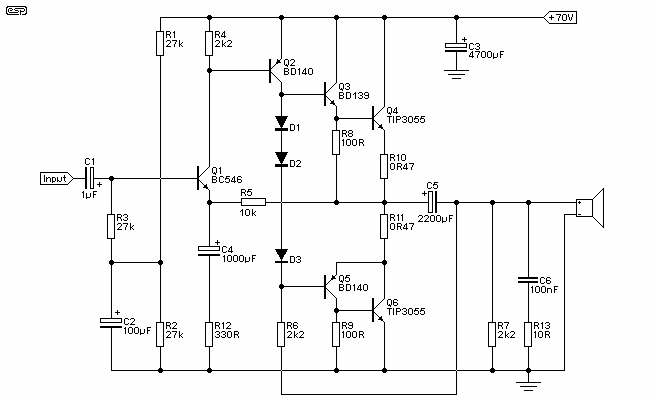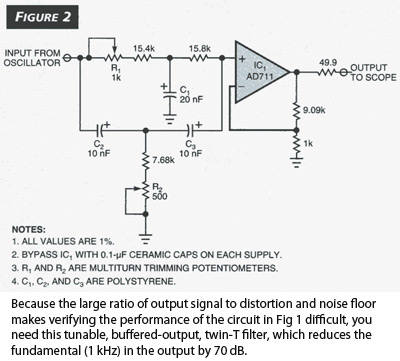
Digitaxly tuned low power active filter
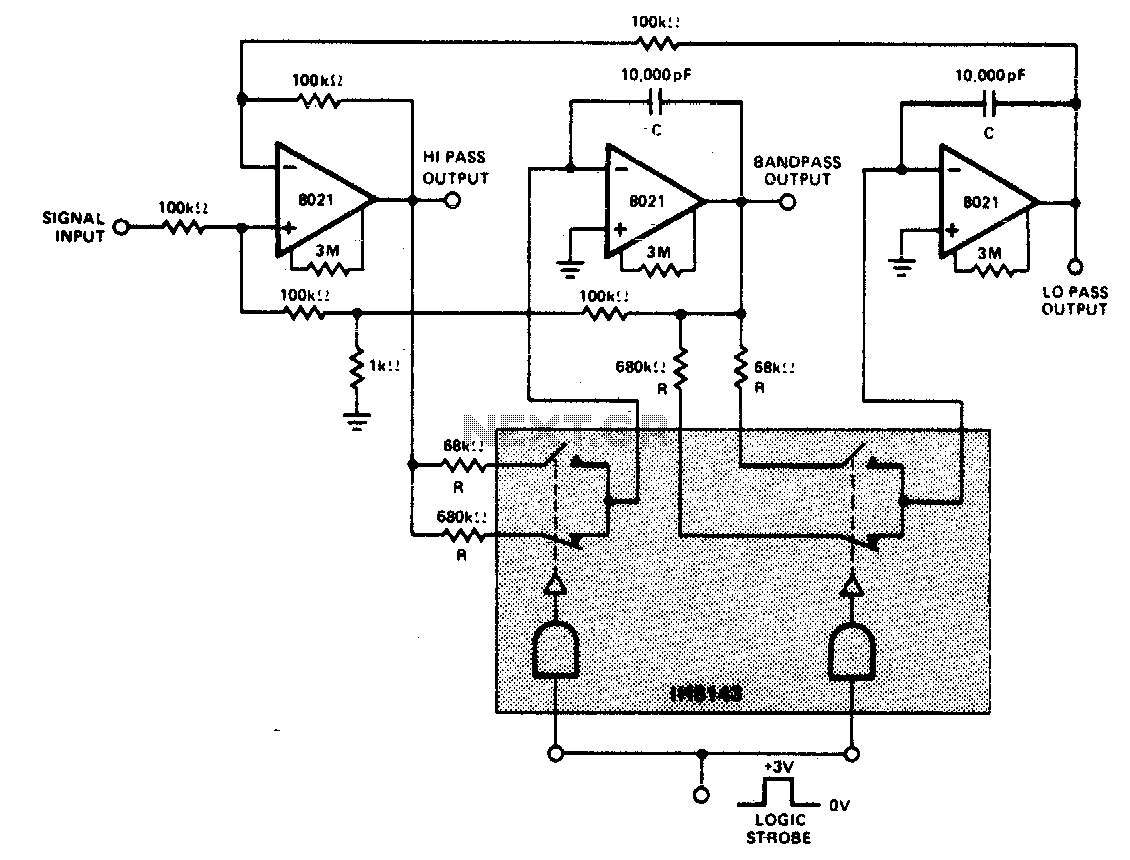
A constant gain, constant Q, variable frequency filter that provides simultaneous low-pass, bandpass, and high-pass outputs. With the specified component values, the center frequency will be 235 Hz and 23 Hz for high and low logic inputs, respectively, with a Q factor of 100 and a gain of 100.
This circuit functions as a versatile filter, capable of producing three distinct output types: low-pass, bandpass, and high-pass. The constant gain characteristic ensures that the output amplitude remains stable across the frequency spectrum, while the constant Q factor allows for a narrow bandwidth around the center frequency, enhancing selectivity.
The filter's design is centered around the use of operational amplifiers (op-amps) configured in feedback loops, which help achieve the desired gain and Q factor. The choice of component values is critical; resistors and capacitors are carefully selected to set the center frequencies at 235 Hz and 23 Hz for high and low logic inputs, respectively. The Q factor of 100 indicates a high degree of resonance at the center frequency, making the filter particularly effective for applications requiring precise frequency selection.
In practical applications, this type of filter can be employed in audio processing, telecommunications, and signal conditioning, where simultaneous access to different frequency bands is required. The low-pass output allows for the passage of signals below a certain frequency, the bandpass output isolates a specific frequency band, and the high-pass output enables the transmission of signals above a designated frequency.
The implementation of this filter requires careful consideration of power supply requirements, as well as layout and grounding techniques to minimize noise and distortion. Properly designed, this filter can significantly enhance signal integrity in various electronic systems.Constant gain, constant Q, variable frequency filter which provides simultaneous low-pass, bandpass, and high-pass outputs With the component values shown, center frequency will be 235 Hz and 23 Hz for high and low logic inputs respectively, Q = 100, and gain = 100.
This circuit functions as a versatile filter, capable of producing three distinct output types: low-pass, bandpass, and high-pass. The constant gain characteristic ensures that the output amplitude remains stable across the frequency spectrum, while the constant Q factor allows for a narrow bandwidth around the center frequency, enhancing selectivity.
The filter's design is centered around the use of operational amplifiers (op-amps) configured in feedback loops, which help achieve the desired gain and Q factor. The choice of component values is critical; resistors and capacitors are carefully selected to set the center frequencies at 235 Hz and 23 Hz for high and low logic inputs, respectively. The Q factor of 100 indicates a high degree of resonance at the center frequency, making the filter particularly effective for applications requiring precise frequency selection.
In practical applications, this type of filter can be employed in audio processing, telecommunications, and signal conditioning, where simultaneous access to different frequency bands is required. The low-pass output allows for the passage of signals below a certain frequency, the bandpass output isolates a specific frequency band, and the high-pass output enables the transmission of signals above a designated frequency.
The implementation of this filter requires careful consideration of power supply requirements, as well as layout and grounding techniques to minimize noise and distortion. Properly designed, this filter can significantly enhance signal integrity in various electronic systems.Constant gain, constant Q, variable frequency filter which provides simultaneous low-pass, bandpass, and high-pass outputs With the component values shown, center frequency will be 235 Hz and 23 Hz for high and low logic inputs respectively, Q = 100, and gain = 100.
